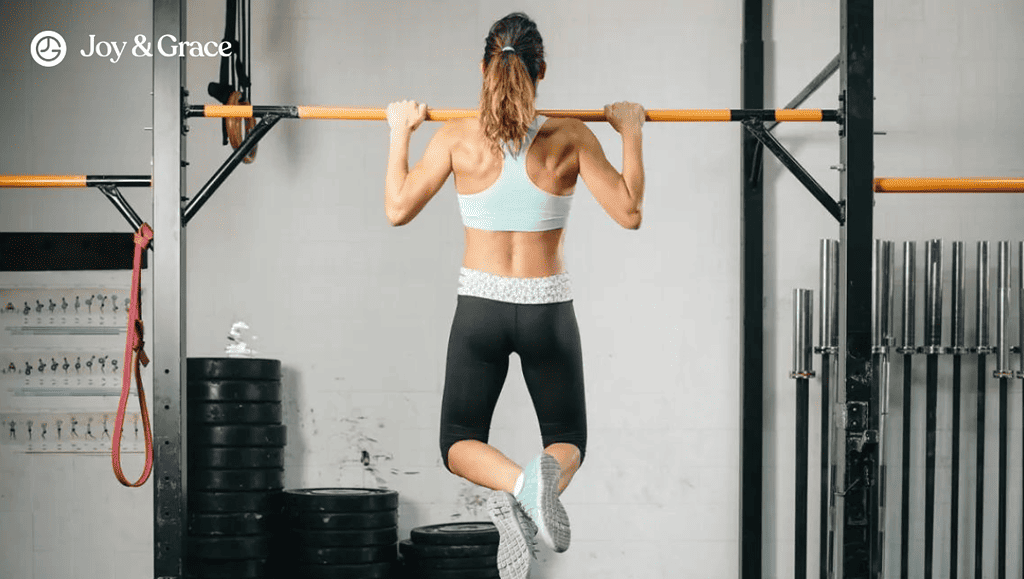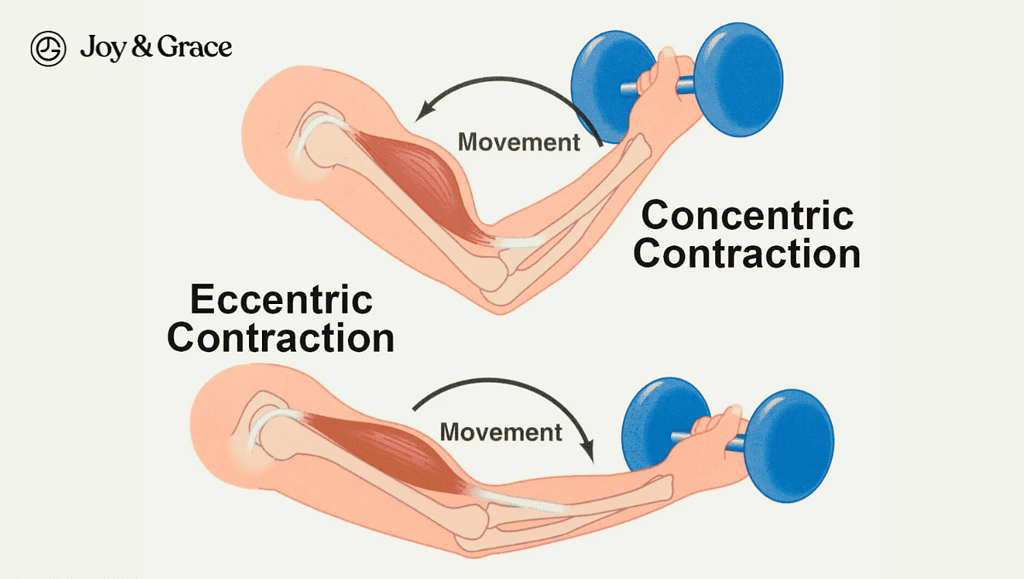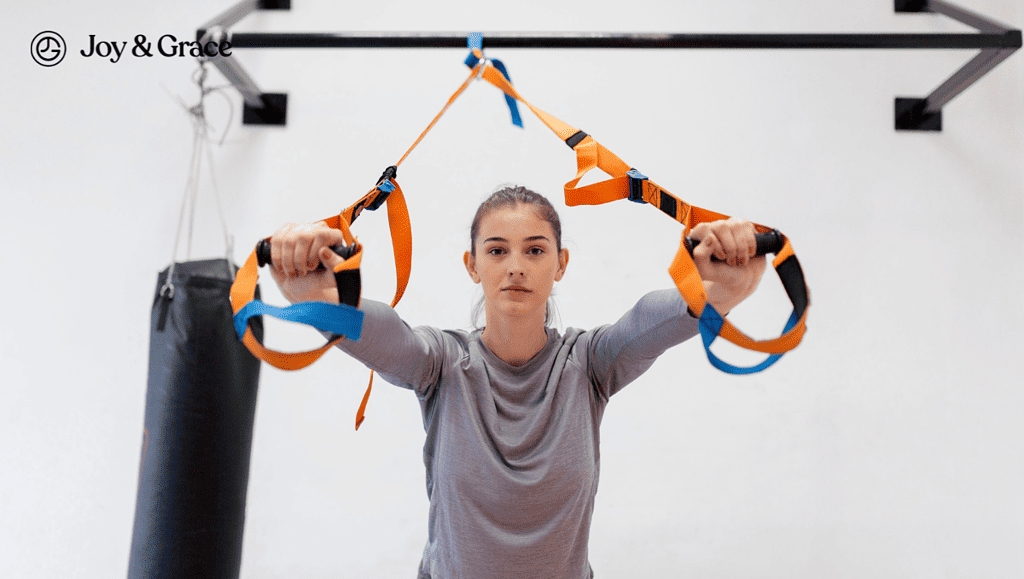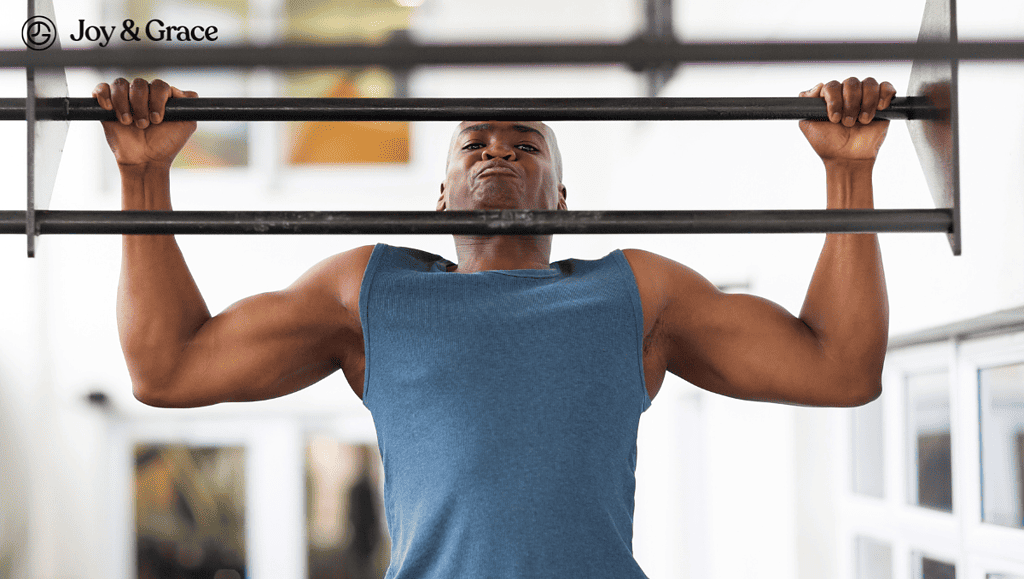We want you to stay healthy and adequately informed, because you deserve it. And we've got you covered.
Shoulder pain during pull-ups is a common issue that can be caused by poor form, overuse, or preexisting shoulder injuries.
If not addressed, shoulder pain can not only hinder your progress in your workouts, but can also lead to more severe injuries.
In this article, we'll primarily discuss the common causes of shoulder pain during pull-ups. Toward the end of the article, we will offer tips and techniques for avoiding or addressing this issue. If you follow some simple rules, you can reach your strength training goals without hurting your shoulders. So, let's get started!
The Main Causes Of Shoulder Pain During Pull-Ups
Studies suggest that the most frequent cause of shoulder pain during pull-ups is shoulder impingement.
Researchers partly base this conclusion on looking at certain sports which also use pull-up techniques. Shoulder impingement is also found to be the leading cause of shoulder pain in people who rock climb or do gymnastics.
There is less space under the shoulder blade when doing pull-ups because of the high arm elevation. In addition, there is also more pressure applied to the shoulder. These might be the ultimate reasons behind shoulder impingement injuries when doing pull-ups.
Other causes of shoulder pain during pull-ups are tendonitis and rotator cuff tears.
Tendonitis (tendon inflammation) is understood to be caused by the high stress on the shoulder tendons during pull-ups.
On the other hand, rotator cuff tears may be thought of as a final stage of a shoulder injury.
Even though they can happen suddenly, they are usually caused by minor shoulder injuries that occur over and over again. Pull-ups are one way that this could happen.
Overall, the culprit behind all these disorders seems to be the great amount of movement and force required to do pull-ups properly. Pull-ups require the upper arm to move through a wide range of motion in the air while carrying all the body weight, which makes sense.
Why Does My Shoulder Hurt When I Do Wide Grip Pull-Ups?

The reason behind the pain during wide-grip pull-ups remains the same as for all types of pull-ups.
During pull-ups, the spaces inside the shoulder joint get smaller. Due to this, there is a greater chance of shoulder impingement and inflammation of the shoulder tendons (tendonitis).
If you've ever done pull-ups, you may have noticed that ones with a wide grip are harder than ones with a narrow grip.
That's because wide-grip pull-ups are proven to be one of the most stressful exercises to the shoulder out of all pull-up techniques.
So you shouldn't feel bad about that. It's not you; It's the pull-ups.
Researchers concluded that this high-stress level is caused by the anatomy of the scapula (the shoulder blade) and the way it moves.
They found that in wide-grip pull-ups, the shoulder blades have a very limited range of motion at specific points during the workout. Because of the limited space, the shoulder blades don’t move forward (protract) and backward (retract) as much as in other types of pull-ups. This, in turn, leads to more pressure inside the shoulder joint and less control of the shoulder blade, making this type of pull-up feel harder to do overall.
In the end, all of this also causes an increased risk of bruising and injury to the shoulder.
Is It Normal For Your Shoulders To Hurt After Pull-Ups?

The proper answer to this question is it depends. It depends if pull-ups are a new exercise to you and, if they are, with what kind of intensity you are working out.
If pull-ups are not a new exercise to you, then shoulder pain after finishing pull-ups may not be normal. The same goes if you've not increased your workout intensity recently.
Another sign that shoulder pain may not be normal is if only one shoulder hurts instead of both.
However, we should also note that pull-ups are a type of exercise proven to cause delayed pain as a regular occurrence.
That's because one part of the pull-ups is a form of what's called an eccentric exercise.
Eccentric exercises stress the muscles when they are extending instead of contracting. In pull-ups, this is achieved by controlling the part when we lower our bodies. Instead of letting gravity do all the work (which means we’d drop ourselves very suddenly), we do it slowly and steadily.
Soreness after this type of exercise is studied quite well. Eccentric exercises are well-known to cause soreness that lasts up to four or five days after the workout for those who are not accustomed to them.
The reason behind the delayed soreness after eccentric exercise seems to be that it leads to localized areas of damage in muscle fibers.
So, if you’re new to pull-ups, you can expect shoulder soreness for some days after the workout.
Do Pull Ups Cause Shoulder Problems?

Like any exercise, pull-ups can cause shoulder problems if you're not careful.
As we mentioned earlier, pull-ups are indeed associated with an increased risk of shoulder injuries.
These injuries include shoulder impingement, tendonitis, and rotator cuff tears.
Things that increase the chances of pull-ups causing shoulder problems are:
- Overtraining
- Doing pull-ups incorrectly
- Not warming up before the workout
But we should also note that when working out, shoulders seem more likely to get hurt than other parts of the upper body.
In studies among CrossFit athletes, the shoulder joint is found to be the one that gets hurt the most of all the joints in the upper body.
Additional studies among street workout practitioners further support this claim. Shoulder injuries are the most frequently reported in this group as well, making up 23% of all injuries. Upper back injuries were the second most commonly reported, making up 18.4% of the cases.
There are two key factors proposed behind this increased frequency:
- The eccentric part of the exercise, and
- The wide range of motion of the shoulder.
Tendons, especially, often get hurt when they are exercised eccentrically.
Eccentric contractions exert high force on the muscle fibers. That causes a lot of mechanical stress on the structures involved. All that leads to an increased risk of small tears in the muscle tendons and muscle fibers.
Just as a quick reminder, eccentric workouts exercise the muscles during their extension period. The eccentric part of pull-ups is when we lower our bodies in a slow, controlled manner.
The wide range of motion of the shoulder, on the other hand, has its risks and benefits.
The shoulder joint has a wide range of motion because it is not a very "rigid" structure.
However, the downside is that it is more likely to become unstable and get injured in the process.
When combined with high repetitions, fatigue, and bad form, all these factors lead to shoulder injuries being more prevalent than other upper body joints.
Are Pull-Ups Good For Shoulder Rehab?

Pull-ups are not recommended for shoulder rehabilitation after injury.
Researchers suggest incorporating pull-ups for shoulder rehabilitation only if they're assisted. That can be achieved with weight-assisted pull-up machines, for example.
The American Academy of Orthopedic Surgeons suggests other exercises for shoulder rehabilitation.
If you are recovering from a deltoid or rotator cuff injury, you should especially stay away from reverse pull-ups.
On the other hand, if you are recovering from an injury to your biceps brachii or brachialis muscles, you should avoid the front pull-up variation.
Avoiding Shoulder Pain And Injuries During Pull-Ups

Proper warm-ups and techniques for doing pull-ups are essential to help you avoid shoulder pain and get the most out of your workouts.
Warm-Up Properly
Warming up properly before doing pull-ups is crucial. A proper warm-up will enable you to:
- Widen the range of motion during your workouts - Research has shown that you can improve the range of motion of your joints by using the right kind of warm-up drills.
- Increase muscular performance - Studies have found that warming up raises your body temperature, making your muscles stronger. In the case of pull-ups, this would ultimately allow you to do more reps.
- Decrease the chance of injuring your muscles - A good warm-up routine can help you avoid getting hurt, according to researchers at Woods.
Warm-ups won't completely stop injuries from happening, but if you hurt yourself less often, you can make more progress over time. This is because if you get hurt, you might have to stop training altogether in order to heal fully.
Breaking Down Your Warm-Ups Into Multiple Parts
A well-designed warm-up is not just one activity. Instead, the warm-up should be made up of multiple parts, each serving different purposes and having different effects on the body.
One evidence-based method to achieve this type of warm-up is what’s called the “RAMP protocol.”
Besides pull-ups, the RAMP protocol can be used for any major, multi-joint exercise or physical activity, even ones that take place outside of the gym.
The word RAMP stands for:
- Raise - The "raise" part refers to warm-up activities that can raise the heart rate, the body's temperature, the body's breathing rate, and blood flow to the muscles.
The way you increase your heart rate and body temperature does not need to be specific to pull-ups. However, ideally, it should also include the portion of the body that is involved during the main workout.
- Activation & Mobilization - This means muscle activation and joint mobilization.
This part of the warm-up involves bodyweight exercises with or without training equipment.
- Potentiation - Refers to the part of the workout where you gradually build up the intensity of the training to the level of the main workout. This could involve doing the same thing as the main workout, but not as hard. In the case of pull-ups, this means doing band-assisted pull-ups, for example.
We can begin creating a pull-up warm-up program using the RAMP technique outlined above by beginning with the "raise" part.
Raise
A rowing machine, or an air or fan bike could be good choices for this part. These exercise machines activate some of the back and bicep muscles. Getting more blood to these areas can help them get more oxygen and heal faster between sets.
The exercise duration in the “raise” portion of the warm-up should be between 5 to 15 minutes.
Activation And Mobilization
For pull-ups, you'll need to get your wrists, elbows, shoulder joints, and shoulder blades ready to move.
Many of the drills that work the forearm, bicep, and lat muscles also work the joints used in pull-ups.
Activating And Mobilizing The Wrists
Warming up the wrists will help activate the forearm muscles, which will help make it easier to grip the bar when doing pull-ups.
Two good wrist-warming exercises are:
- Weighted Wrist Rotations, and
- Wrist flexion and extension drill.
- Weighted Wrist Rotations - This exercise may be helpful if you are performing pull-ups with various grips, such as the underhand and overhand grips. This exercise engages the biceps and forearm muscles, which play a crucial role in wrist movements.
How to do weighted wrist rotations:- Grab the edge of a small dumbbell or disc of weight.
- Rest your arm on the edge of a surface (i.e., a table.)
- Let your wrist turn out until it has turned 90 degrees (in a controlled way.)
- Repeat 10 to 15 times.
- Let the wrist turn the other way inward until it has turned 90 degrees the other way.
- You should repeat this 10 to 15 times, as well.
- Wrist flexion and extension drill - The wrist flexion and extension drill engages the flexors and extensors of the wrist (the muscles that enable you to bend and straighten your wrist.)
Here’s how they’re performed:- Place your forearm on a flat surface with your palm down and fist hanging off the edge.
- With the same fist, hold a small weight and slowly and deliberately bend your wrist downward.
- Bring the weight back up by bending the wrist upward. Repeat for the appropriate number of times (try to go for 10 to 15 reps).
- Adjust your forearm so that your palm is now facing up in the sky.
- Perform a controlled, gentle downward stretch of your wrist.
- Bring the weight back up by bending the wrist upward. Repeat for the required number of times (try to go for 10 to 15 reps this time as well)
Activating And Mobilizing The Elbows
Warming up the elbows will increase blood flow to the muscles in the forearm and biceps. That’s very important because the biceps work hard to bend the elbow during pull-ups.
A recommended exercise to warm up the elbows is called elbow circles.
Both the triceps and the biceps are worked during elbow circles.
- Elbow circles are done like this:
- Hold your arm out in front of you, with the biceps and palm facing up.
- Bend your elbow so that your forearm curves back toward your bicep.
- Turn your upper arm around, so your hand is next to your chest.
- Bring your arm back out to the same position where you started.
- Do this for a few reps, and then do it the other way around (by reversing the movement.)
Warming Up The Shoulders And Shoulder Blades During Activation And Mobilization
The shoulder joint and shoulder blades can become stiff and hard to move without warming up.
Two good exercises to warm up the shoulders and shoulder blades during the “activation and mobilization” period are:
- Scapular wall slides, and
- Serratus wall slides.
- Scapular wall slides - The scapula wall slide is a great way to get your shoulder blade to “move” correctly.
Here’s how you do scapula wall slides:
- Stand about 10 inches from the wall with your back to it, and keep your knees and hips bent. Keep your head against the wall.
- Lean against the wall with your back straight, arms bent, and elbows flat against the wall.
- Slide your arms as far up vertically as you can until your elbows are straight.
- Slide slowly and bend your elbows down vertically, as if you were trying to do a pull-up.
- Serratus wall slides - The serratus wall slide is like the scapula wall slide in that it improves the scapula's (shoulder blade) ability to rotate. This is important to make sure that your back muscles stretch out the right way when you lower yourself in a pull-up.
Serratus wall slides are done like this:
- Face the wall and stand about 10 inches away from it.
- Keep your arms against the wall with your elbows bent.
- Make sure your forearms are parallel and about the width of your shoulders apart.
- Keep your abs tight and your whole back flat.
- Slide your forearms as far up the wall as you can without getting closer to the wall.
- Bring them back to where they started and do it again.
Potentiation: Getting Ready For Pull-Ups
Potentiation is the last part of the warm-up. After the general warm-up and activation and mobilization work, this part is a more specific warm-up protocol that helps you work your way up to doing a full bodyweight pull-up or a weighted pull-up.
The best thing to do during this part is do exercises that are similar to pull-ups but not as hard as a bodyweight pull-up.
Two drills to help you get better at pull-ups are:
- Single-arm pulldowns with a resistance band
- Pull-ups assisted by a resistance band
- Single-arm pulldowns with a resistance band
The single-arm resistance band pulldown is a great way to perform a movement similar to pull-ups one arm at a time. This could be helpful for people whose left and right sides of the body are different in terms of strength and/or muscle size.
Single-arm pulldowns with a resistance band are performed in this way:
- Attach a resistance band to the top of the pull-up bar.
- Set yourself up in a kneeling or half-kneeling position. You should keep your knees on the floor and the band above your shoulder.
- If there is still some slack in the band, grab it and wrap it around your hand several times.
- Bend your elbow and pull it downwards to the side of your hips.
- Slowly bring the resistance band back up, and repeat as many times as you want (10 to 15 repetitions are sufficient).
- Do the same thing on the other side.
- Pull-ups assisted by a resistance band
The resistance band-assisted pull-up is an excellent way to prepare for a full pull-up. In this kind of pull-up, the resistance band helps you by pulling you upwards.
Here’s how resistance band-assisted pull-ups are performed:
- Attach a resistance band to the bar at the top of the pull-up bar.
- Grab the pull-up bar and put your knees or feet on the bottom of the resistance band loop.
- Let yourself hang below the pull-up bar and keep your hips as far back as you can (straight).
- Perform the assisted pull-up 3–6 times.
Summing it Up: An Example of a Pull-Up Warm-Up Routine
To recap what we’ve discussed, a proper pull-up warm-up would look like the following:
- Cardio on a machine for 10 minutes at a low intensity
- 15 reps of wrist circles, flexions and extensions.
- 15 reps of elbow circles.
- 15 reps of serratus or scapula wall slides
- 10 reps of the pulldown with one arm
- 5 reps of assisted pull-ups.
- The main pull-up exercise
Hand Positioning
For proper form and to avoid shoulder pain, it's essential that your hands are in the right place when doing pull-ups. The position of your hands on the bar can affect the muscles engaged and your upper body's overall stability.
For pull-ups, the best way to hold the bar is with your hands a little wider than shoulder-width apart. This grip is the best because it also activates your lats. Putting your hands too far apart will put too much pressure on your shoulders, and putting them too close together will limit your range of motion.
Another option is to use an underhand grip, with your palms facing your body. This grip can be helpful for beginners or those struggling with pull-ups, as it also “recruits” the biceps muscles. Biceps muscles help the lats and shoulder muscles and make the pull-ups feel easier overall.
By experimenting with different hand positions and finding what works best for you, you can improve your form and reduce the risk of shoulder pain during pull-ups.
Set Your Shoulder Blades (Engage Your Lats)
Your shoulder blades, or scapulae, play a crucial role in the movement of your shoulders and arms. Setting them in the right way can help to stabilize your upper body and prevent strain on the shoulders.
As you pull yourself up towards the bar, focus on squeezing your shoulder blades together and down towards your hips. This will help to engage the correct muscles and provide stability for your upper body.
As you lower yourself down, control your descent and avoid simply dropping back down to the starting position. This will help to build strength and prevent injury.
By setting your shoulder blades during pull-ups, you can improve your form and reduce the risk of shoulder pain.
Keep Your Core Engaged
One important way to avoid shoulder pain and use the correct form when doing pull-ups is to keep your core engaged.
You can engage your core by squeezing your glutes and flexing your quads during the start of the pull-up.
Your core muscles give your upper body stability and support. Using them during pull-ups takes the pressure off of your shoulders and makes the exercise more efficient and effective.
Takeaway
- Pull-ups are a great exercise to strengthen your shoulders. However, there seems to be an increased risk of injury with shoulder exercises overall.
- Pain, albeit expected from workouts, may also be a sign of injury.
- It is essential you do things right when doing pull-ups and stay within your limits.
When doing pull-ups, you can reduce the chance of shoulder pain and injury by using the proper form and technique. Making adjustments as needed and listening to your body is essential.
Make sure to warm up properly before your workouts, take breaks if you feel pain or discomfort, and talk to a doctor if you have any questions.
With a bit of care and attention, you can reach your strength training goals while keeping your shoulders healthy and strong.














